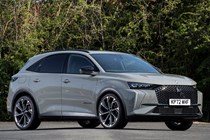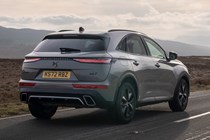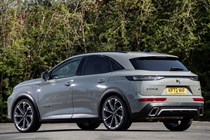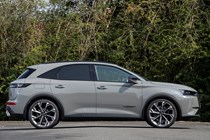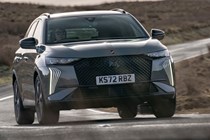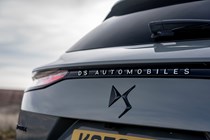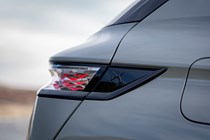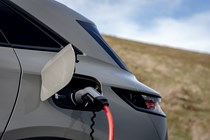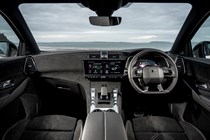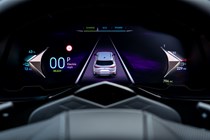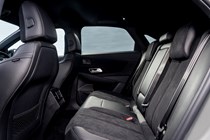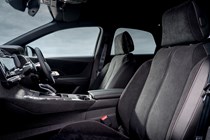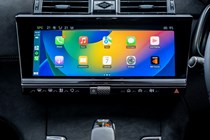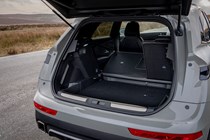
DS 7 engines, drive and performance
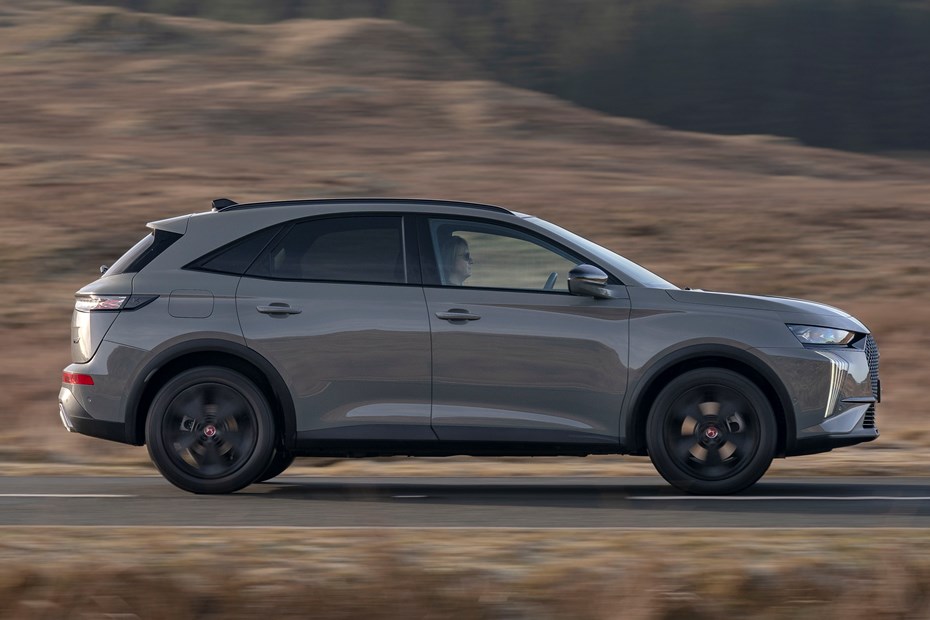
- Fastest model is rapid
- Transition from petrol to electric can be jarring
- Diesel not as fast as PHEVs
Plug-in hybrid engine
There are three plug-in hybrid (PHEV) options to choose from, all based on the same turbocharged 1.6-litre petrol engine and 14.2kWh battery pack. Theoretical maximum electric range spans from 34 to 42 miles but in reality it’s more like 25 to 30 miles.
The entry-level E-Tense 225 has a single electric motor on the front axle which, when paired with the petrol engine, provides a total output of 225hp and 360Nm of torque. The mid-range E-Tense 4x4 300 gets an extra motor on the rear axle that bumps performance up to 300hp and 520Nm of torque and there’s also the flagship E-Tense 4x4 360 model with 360hp.
Diesel engines
If you don’t want your DS 7 to have a hybrid powertrain, your only choice is a 1.5-litre four-cylinder diesel unit which seems a little incongruent with DS’s environmental aims.
However, it should be fine providing you’re not using it to potter around town, as it has a healthy output of 131hp and 300Nm of torque.
What’s it like to drive?
- Pretty quick
- Soft riding
- Handles well for a family SUV
The range-topping 4x4 360 features a plug-in hybrid powertrain with 360hp and 520Nm of torque, making it the quickest model in the line-up. From rest, DS says it can crack 62mph in 5.6 seconds and hit a top speed of 146mph.
The speed catches you off guard. It’s a lavishly equipped, leather-lined French barge, but it accelerates at the same rate as a Volkswagen Golf GTI Clubsport. It’s very impressive – but it isn’t without its faults.

Use the available performance too often and you’ll chew through your battery capacity faster than an unsupervised toddler will munch through a tub of Heroes. The automatic gearbox can be a little slow to respond, too. So, if you need instant acceleration, you’ll need to manually shift down a few cogs to get the engine to its sweet spot.
Because it’s so much more powerful than the standard DS 7 PHEVs, the E-Tense 360 also comes with a host of chassis upgrades. These include lowered suspension, bigger brakes and larger 21-inch alloys shod in stickier tyres. Sadly, the suspension and wheel alterations have made the SUV less comfortable – and they don’t make an appreciable difference in the corners, either.
The less powerful 300 model is around 60hp down, and is consequently a bit less quick. It certainly feels less immediate, but it’s still plenty fast enough for any SUV owner. The engine is particularly coarse when it switches over from electric to hybrid, but the ride is better because of the regular suspension and smaller wheels.
The least powerful 225hp PHEV is a good chunk of change cheaper than the rest of the range. It’s certainly slower on paper and feels it in real life too, especially off the line, but it’s still reasonably quick. This is our preferred choice in the plug-in lineup because of its price.
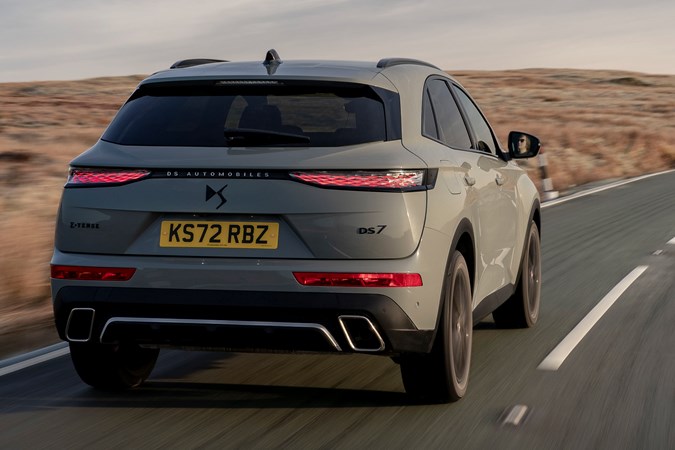
The DS 7 is quick, but it lacks precise feedback. Sure, it works fine when you’re just pottering around town or cruising along the motorway, but it just never feels that well connected. The DS 7 has never been a particularly sporting car, so DS’s decision to have a 355hp powertrain baffles us. We feel it (and the chassis modifications it brings) doesn’t suit the SUV’s laidback nature.
The four-wheel drive plug-in hybrid versions also feature a clever piece of chassis tech called DS Active Scan Suspension. It analyses the road ahead using a camera mounted behind the rear-view mirror and, if it spots a pothole, it can preload the suspension to improve the ride quality as the car passes over it.
The idea sounds great in theory, but we were left unimpressed by the experience in practice. As far as we could tell, the system wasn’t working because the DS 7 still jiggled and crashed over broken paving. Perhaps it isn’t sophisticated enough to decipher the UK’s pockmarked roads, or perhaps DS hadn’t finalised the tuning on our early build cars. Either way, there’s room for improvement.


